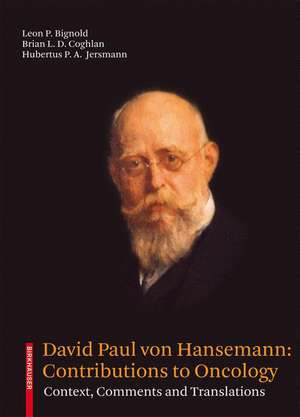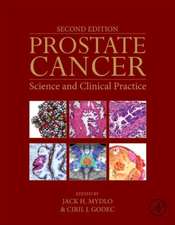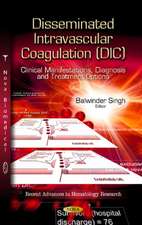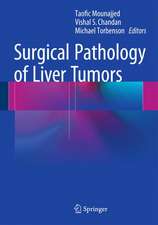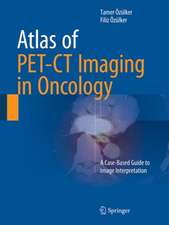David Paul von Hansemann: Contributions to Oncology: Context, Comments and Translations
Autor Leon P. Bignold, Brian L. D. Coghlan, Hubertus P.A. Jersmannen Limba Engleză Hardback – 12 dec 2006
In the process of linking cancer to chromosomal material, Hansemann coined the terms "anaplasia" and "dedifferentiation". These terms have remained the basis of descriptive terms concerning the microscopical appearances of tumours ever since. Nevertheless, despite the popularity of his terminology, Hansemann's ideas were attacked vigorously by almost all proponents of rival theories of the nature of cancer. Partly due to these disputes during his life-time, and partly due to other factors, interest in von Hansemann's ideas diminished during the twentieth century and his works are rarely mentioned today.
This book presents translations of all the relevant German texts, and analyses the background and context of Hansemann's theories as well as the reasons why he was almost completely forgotten. It shows that some of Hansemann’s ideas may still be relevant to cancer research today, and that he deserves to be remembered in relation to cancer as Vordenker unter den führenden Denkern seiner Zeit - The foremost of the leading thinkers of his time.
Preț: 745.53 lei
Preț vechi: 784.77 lei
-5% Nou
Puncte Express: 1118
Preț estimativ în valută:
142.67€ • 154.92$ • 119.85£
142.67€ • 154.92$ • 119.85£
Carte tipărită la comandă
Livrare economică 23 aprilie-07 mai
Preluare comenzi: 021 569.72.76
Specificații
ISBN-13: 9783764377687
ISBN-10: 3764377682
Pagini: 371
Ilustrații: XXIV, 371 p.
Dimensiuni: 170 x 244 x 34 mm
Greutate: 1.16 kg
Ediția:2007
Editura: Birkhäuser Basel
Colecția Birkhäuser
Locul publicării:Basel, Switzerland
ISBN-10: 3764377682
Pagini: 371
Ilustrații: XXIV, 371 p.
Dimensiuni: 170 x 244 x 34 mm
Greutate: 1.16 kg
Ediția:2007
Editura: Birkhäuser Basel
Colecția Birkhäuser
Locul publicării:Basel, Switzerland
Public țintă
ResearchCuprins
Background.- Family, education and career.- Aspects of philosophy in the culture and science of Germany in the nineteenth century.- Aspects of biomedical science in the nineteenth century.- Theories of tumours prior to Hansemann.- Hansemann’s ideas of the nature of cancer: description and analysis.- Critics, reviewers, the forgetting of Hansemann, and what might have been.- Translations.- On the asymmetrical division of cells in epithelial carcinomata and their biological importance.- On pathological mitoses.- Karyokinesis and “Cellular Pathology”.- On the anaplasia of tumour cells and asymmetric mitosis.- “Studies on the Specificity, the Altruism and the Anaplasia of cells with Special Reference to Tumours”.- Hansemann’s other articles and books on tumours and related topics.
Textul de pe ultima copertă
In 1890, just a few years after the discovery of the chromosomes, David Paul Hansemann, a pathologist-in-training with the famous Rudolph Virchow in Berlin, produced a theory of the pathogenesis of cancer involving the key current concept: that the first change which occurs in cancer is an alteration of the hereditary material of a normal cell at the site where the cancerous process begins.
In the process of linking cancer to chromosomal material, Hansemann coined the terms "anaplasia" and "dedifferentiation". These terms have remained the basis of descriptive terms concerning the microscopical appearances of tumours ever since. Nevertheless, despite the popularity of his terminology, Hansemann's ideas were attacked vigorously by almost all proponents of rival theories of the nature of cancer. Partly due to these disputes during his life-time, and partly due to other factors, interest in von Hansemann's ideas diminished during the twentieth century and his works are rarely mentioned today.
This book presents translations of all the relevant German texts, and analyses the background and context of Hansemann's theories as well as the reasons why he was almost completely forgotten. It shows that some of Hansemann’s ideas may still be relevant to cancer research today, and that he deserves to be remembered in relation to cancer as Vordenker unter den führenden Denkern seiner Zeit - The foremost of the leading thinkers of his time.
In the process of linking cancer to chromosomal material, Hansemann coined the terms "anaplasia" and "dedifferentiation". These terms have remained the basis of descriptive terms concerning the microscopical appearances of tumours ever since. Nevertheless, despite the popularity of his terminology, Hansemann's ideas were attacked vigorously by almost all proponents of rival theories of the nature of cancer. Partly due to these disputes during his life-time, and partly due to other factors, interest in von Hansemann's ideas diminished during the twentieth century and his works are rarely mentioned today.
This book presents translations of all the relevant German texts, and analyses the background and context of Hansemann's theories as well as the reasons why he was almost completely forgotten. It shows that some of Hansemann’s ideas may still be relevant to cancer research today, and that he deserves to be remembered in relation to cancer as Vordenker unter den führenden Denkern seiner Zeit - The foremost of the leading thinkers of his time.
Caracteristici
Unique compilation of translated texts Presents Hansemann's observations in historical context Basis of today's tumor nomenclature
